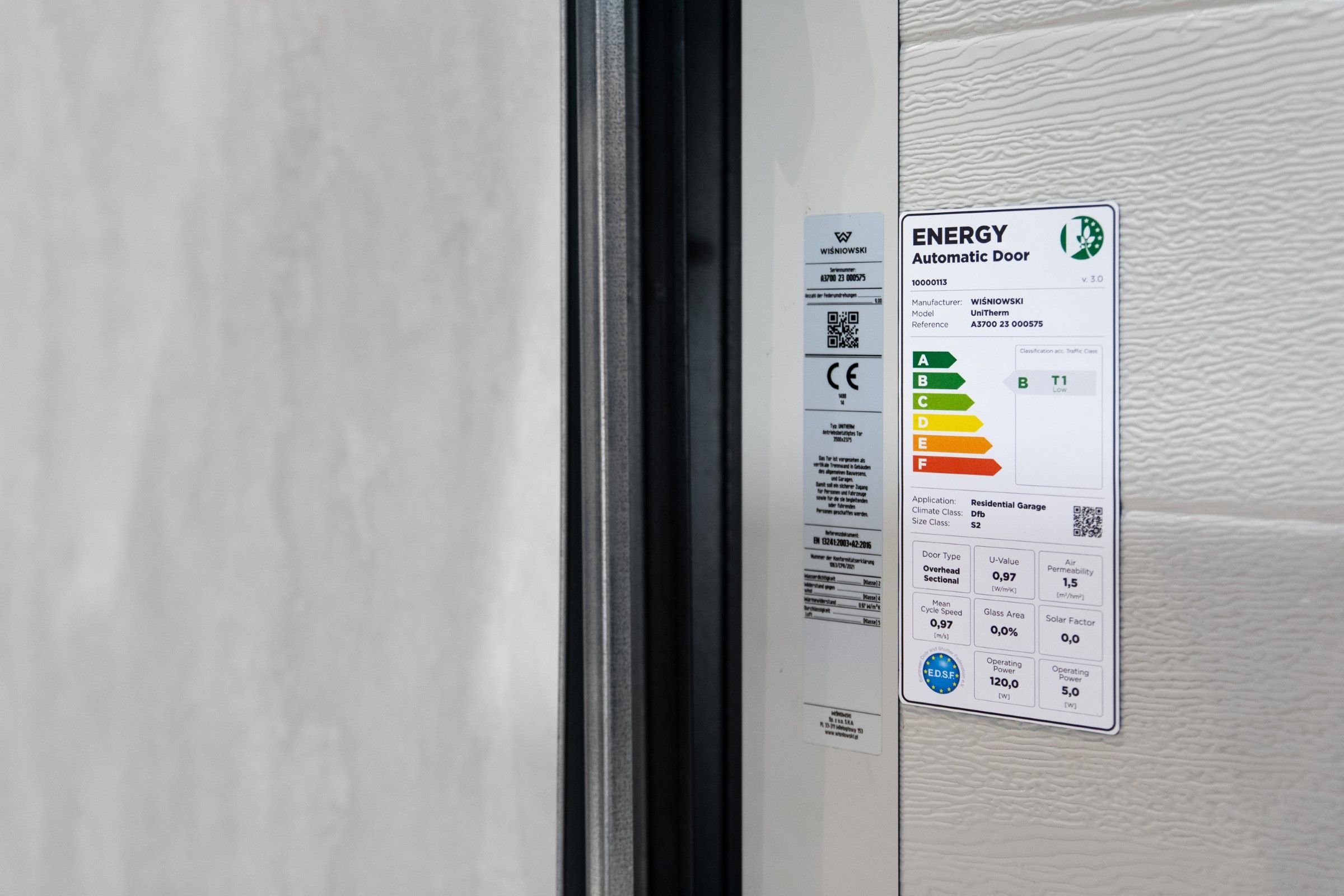Having an energy label on construction products will not only make it easier for users to determine the energy rating of the entire building, but also gives clear insight into the potential savings you can expect throughout its use.
In Europe, buildings are responsible for over 40% of CO₂ and greenhouse gas emissions, mainly due to the energy consumed by heating and air conditioning systems. When it comes to heating, much of the energy loss is caused by poor thermal insulation the elevation and improper installation of doors, windows, and garage doors. Ensuring increased thermal comfort for users, consisting in choosing doors, windows, and garage doors with a sufficiently low heat transfer coefficient, effective insulation, and smart automation systems, considerably contributes to the energy efficiency of the entire building. This, in turn, directly translates into notable energy savings.
WIŚNIOWSKI uses the energy labelling system developed by the European Door and Shutter Federation (E.D.S.F.), which complies with the following EU directives:
• directive 2009/125/EC establishing a framework for the setting of ecodesign requirements for energy-related products,
• directive 2010/31/EU on the energy performance of buildings.
These labels clearly indicate the key parameters that influence the energy efficiency of windows, doors, and garage doors. For garage doors, the energy class is calculated based on several factors, including:
- Heat transfer coefficient.
- Air infiltration.
- Air permeability.
- Solar radiation (in the case of glazed components).

Why labelling construction products is important
The introduction of energy classes for construction products is part of the obligations imposed on EU Member States under the 2018 Energy Performance of Buildings Directive (EPBD). Every building in Poland is now required to have a document that includes an energy performance certificate and information about its energy class, rated on a scale from A+ to G.
Energy classes refer to final energy consumption – the energy that directly affects heating bills. A building rated A+ is considered energy-positive, generating more renewable energy than it consumes from non-renewable sources. A building in class A is typically zero-emission, while a building rated G represents the least energy-efficient standard. The cost difference between heating a building in class A and one in class F or G is dramatic – heating expenses for lower-class buildings can be five to six times higher.
That is why, when choosing doors, windows, and garage doors, it is crucial to consider their energy class – and ultimately choose those that offer the greatest energy savings over time.


